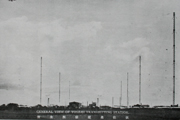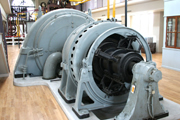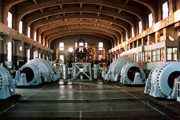Architecture
Buildings of the Yosami Radio Transmitting Station were in reinforced concrete, still rare in 1920s. The office building, with an impressive arch and minute decorative designs, was designed by Yoshitaro Takeuchi, architect from Handa city, Aichi Prefecture.
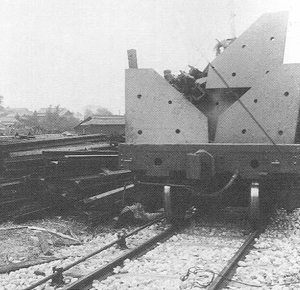
Construction
A temporary rail of 2.4km was laid from Ogakie station on Mikawa Railway Company, current Meitesu Railroad, in May 1927, for carrying construction materials of the Yosami Radio Transmitting Station, and provided service until 1928. Earth wire laying, steel tower construction, antenna wire stretching, and office and transmitting building construction were carried out by work of some 100,000 man-days.
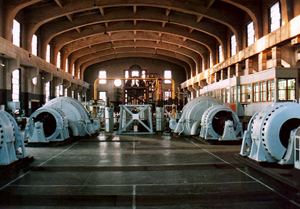
Office and Transmitting Buildings
The Office Building was said to take the German architecture style of then the Ministry of Communication, and was noted an arch-towered modern building. Upper parts of the gate doors are decorated with stained glass, the floor with colored tiles, and decoration was made at lighting on the walls and ceiling.
The Transmitting Building housed a pair of the VLF transmitting equipment of generators and motors, one in use and the other backup. It looked like a power station house, rather than a transmitting house.
A bird’s eye view of the Yosami Radio Transmitting Station with the eight steel towers can been seen at the diorama in the Yosami Radio Transmitting Station Memorial Museum.
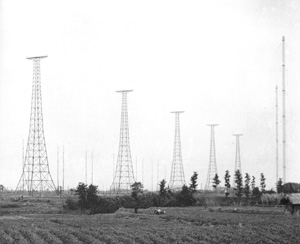
The Steel Towers
The eight 250-m high steel towers were stood upright by the basement insular spherical shaft receptor style. The spherical shaft receptors enable dispersing tension, even when steel towers were blown hard by wind. Each steel tower was supported by wire ropes at six stages in three directions. The wire ropes per steel tower weighed 150 tons, and stretched lean to the ground as far as 1.8km apart from the tower base. Boldest wire lopes were used on top and thinner lower to the base, and at the middle of each rope was equipped with insulator, for safety and transmission quality.
Architectural Data
Office and Transmitting Buildings
Designed: Yoshitaro Takeuchi, Sankyo Construction Office, Tokyo
Constructed: Ohbayashi Construction Company
The Steel Towers
Designed: Sen-no-suke Kusunoki, Japan Wireless Telegraph Company, Tokyo
Constructed: Ohkura Construction, current Taisei Corporation






